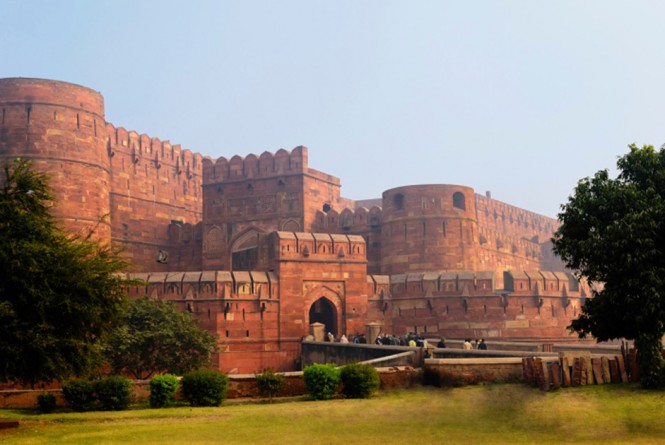
Fort Rouge, Lal Quila or Qila-i-Akbari all address one overwhelmingly grand monument of Agra– the Agra Fort. The fort stands as a glorious symbol of power and strength and is also listed among the UNESCO World Heritage Sites. Situated on the banks of the River Yamuna, this fort is around two kilometers from the Taj Mahal.
This robust specimen of Mughal architecture and the tales associated with the Agra Fort are so gripping that they will take you to the beautiful world of your imagination and add on to your curiosity to know more about the royal era. This fort has witnessed many ravages and has experienced a series of transformations from an old fortress of Badalgarh (pre-Mughal period), to a huge fort made of red sandstone (constructed under the rule of Akbar), to being the capital (under Sikadar Lodi). Later, Ibrahim Lodi (son of Sikandar Lodi) was defeated and killed during the Battle of Panipat by Babur. After that, Humayun was crowned here, defeated by Sher Shah and again recaptured by the Mughals.
It was during the rule of Shah Jahan, that the Agra Fort got its present look. Spread over 94 acres, the fort has four gates, one on each side. Lahore Gate and Delhi Gate are the revered ones. Decorated with white marble, the Delhi Gate is the grandest of all. Over the course of time, invaders of the fort had added a distinguished section to the Agra Fort and thus it is like a cluster of over twenty attractions in the fort’s compound. These include palaces, mosque (Moti-Masjid, Nagina-Masjid and Mina-Masjid) and wells. Akbar’s Baoli is a 25 meters deep well with steps descending into it. The detailed art and architecture of Diwan-e-aam and Diwan-e-khaas cannot be ruled out. You can also enjoy the light and sound show in the evening.
Do experience the awe inspiring enigma of this royal fort on your next visit to Agra.
For more related information, you may refer to the following:
Top 10 World Heritage Sites in India





